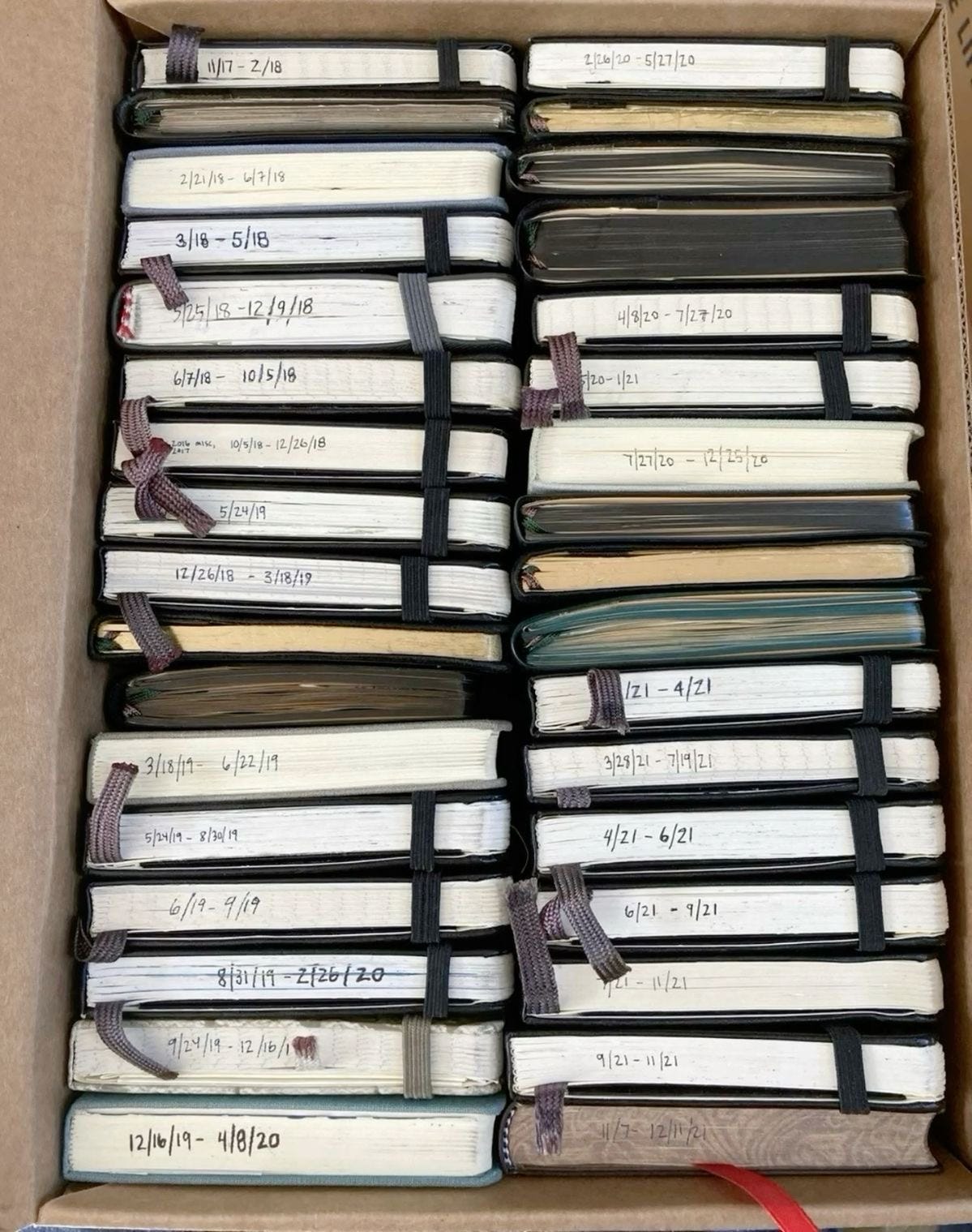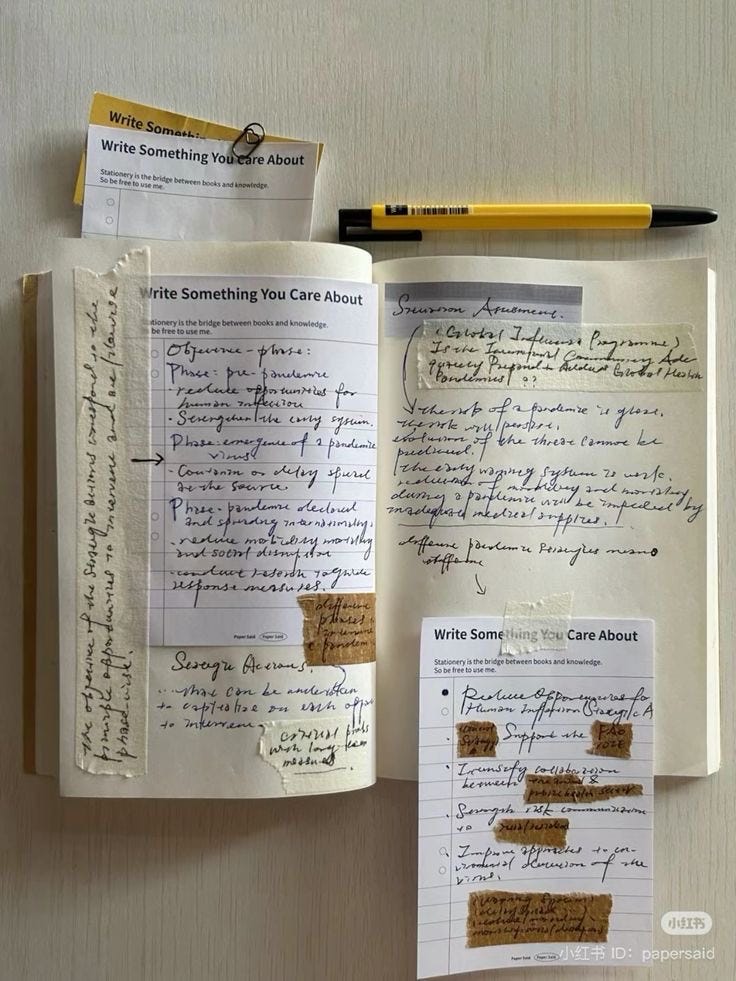How to Start a Commonplace Book (and Why You Need One)
There’s something magical about a notebook filled with the words, images, and ideas that resonate with you. It’s like a time capsule of your evolving thoughts, a space where random scribbles somehow form a tapestry of your mind. If you’ve ever saved a quote, bookmarked an article, or kept a screenshot of something that moved you, you’re halfway to keeping a commonplace book. So, what exactly is a commonplace book, and why should you start one?
Historically, commonplace books have been used by thinkers and writers as a way to collect ideas, quotes, and insights. They’re a blend of journal and scrapbook, less about keeping a diary of events and more about capturing the essence of what sparks your curiosity. A commonplace book is a personal record—a way to build a map of your thoughts, discover connections between ideas, and revisit them in new ways over time.
Here’s a step-by-step guide inspired by Morgan Harper Nichols’ “Commonplace Book Guide” that breaks down how you can start your own commonplace book and make it a regular part of your life.
1. Choose Your Tool
Before you dive into filling pages, start by deciding how you want to keep your commonplace book. The classic approach is to use a physical notebook. There’s something tactile and satisfying about writing things down by hand, and it makes the process feel more intentional. However, if you’re someone who’s always on your phone or laptop, a digital note-taking app might be more practical. Apps like Notion, Evernote, or even a simple Google Doc allow you to save quotes, images, and links all in one place. For those who want something in between, index cards can be a great way to keep things flexible, allowing you to rearrange ideas as they evolve.
2. Start Small
It’s tempting to dive in and try to fill your book with everything that’s ever inspired you, but that can get overwhelming. Instead, start with a few simple entries. Look through your phone for saved screenshots or quotes you’ve highlighted in ebooks. Maybe jot down a phrase that’s been stuck in your head, or a passage from a book that made you stop and think. The goal is to capture what already resonates with you, without overthinking it.
3. Capture More of What Resonates
As you get comfortable with the process, start expanding. Think about what stood out to you recently—a video you watched, an article you read, or even a conversation you had. Write down the key idea or a few sentences that summarize it. The point of a commonplace book isn’t to capture everything, but rather to collect the things that linger in your mind, the ones that feel meaningful even after the moment has passed.
4. Add Your Thoughts
Here’s where a commonplace book becomes truly personal. Instead of just recording what you find interesting, ask yourself why it resonates. What does this make you think about? How does it connect to your goals or current projects? Imagine it like having a conversation with yourself—exploring how each entry adds to your understanding of the world. You can even make notes about how you might use this idea in your life, like applying a quote to a personal challenge or finding inspiration for a creative project.
5. Revisit Regularly
One of the best parts about a commonplace book is that it’s never finished. Make it a habit to revisit your entries. Whether it’s weekly, monthly, or yearly, look back and see if certain ideas still resonate. Sometimes, the same thought will hit differently depending on where you are in life. Noticing patterns in what you save can give you insight into your evolving interests and values.
6. Take a Closer Look
Highlight or underline parts of your entries that feel especially important. Use symbols or stars next to your favorite ideas. Maybe you’ll notice that some thoughts raise questions or spark curiosity—circle these to explore later. This part of the process helps you see connections and discover themes in your thinking, letting you go deeper into what matters most to you.
7. Share and Discuss
Our ideas gain depth when we share them with others. Talk about an entry with a friend or family member and see if they have a different perspective. The act of explaining why something resonates with you can give you new insights, and the feedback from others might challenge you to think in new ways. Commonplace books don’t have to be solitary pursuits; they can be a way to start meaningful conversations.
8. Grow Your Collection
Once you get into the rhythm, expand your collection. Try reading a new genre, watching a documentary, or listening to a podcast on a topic you wouldn’t normally explore. Add notes on things you’re learning, questions you have, or quotes that capture a new perspective. Experiment with different note-taking methods—doodles, mind maps, or collages. A commonplace book is a reflection of your inner world, so let it grow and change as you do.
Ideas to Get You Started
If you’re not sure what to add, here are some ideas that can inspire new entries:
• Quotes you’ve screenshotted or written down, especially the ones that make you pause and reflect.
• Saved links from articles or blog posts that had interesting ideas or useful tips.
• Highlighted sections from books you’re reading—passages that resonate or make you think.
• Mind maps of things you’re learning or brainstorming sessions to organize thoughts visually.
• Song lyrics that strike a chord or feel personally meaningful.
• Things you remember from conversations with friends, especially the ones that stick with you.
• Ticket stubs, postcards, stamps—these mementos can bring back memories and spark inspiration.
• Observations from nature or moments that make you see beauty in the ordinary.
• Random notes, poetry, definitions of words you love, or concepts you want to remember.
• Questions you’re asking yourself or thoughts you’re exploring.
This list is just the beginning. You can include anything that resonates with you—favorite metaphors, ideas from podcasts, books you want to read, or anything you want to revisit later. The beauty of a commonplace book is that it’s entirely personal; it’s your mind on paper, in all its curiosity and chaos.
Physical or Digital?
There’s no right or wrong way to keep a commonplace book; it’s all about what feels natural for you. If you love the feeling of writing things out and having a tangible record of your thoughts, go physical. If you prefer the convenience of keeping everything in one searchable space, digital is the way to go. The format is less important than the habit itself.
A commonplace book is more than just a collection of quotes and thoughts; it’s a personal archive of inspiration and growth. In a world where we’re constantly bombarded with information, a commonplace book is a way to capture what matters, to make sense of the noise, and to hold onto the ideas that resonate with us. It’s a space for curiosity, reflection, and creativity—qualities that are often neglected in our fast-paced lives.
So, grab a notebook, open a new doc, or collect some index cards, and start building your own little world of ideas. Over time, you’ll have a treasure trove of thoughts and inspirations to look back on—a map of your mind, evolving as you do. And maybe, just maybe, you’ll start to see patterns in the things that move you, patterns that reveal something about who you are and where you’re going.









my notes app is my commonplace book (and it feels cluttered) 🫠
I adore this post!!! ✉️
i love commonplace journals as a way to also see what interested your younger self! something i wouldn't find interesting now, but my younger self wrote down. it's a snapshot into who you are.